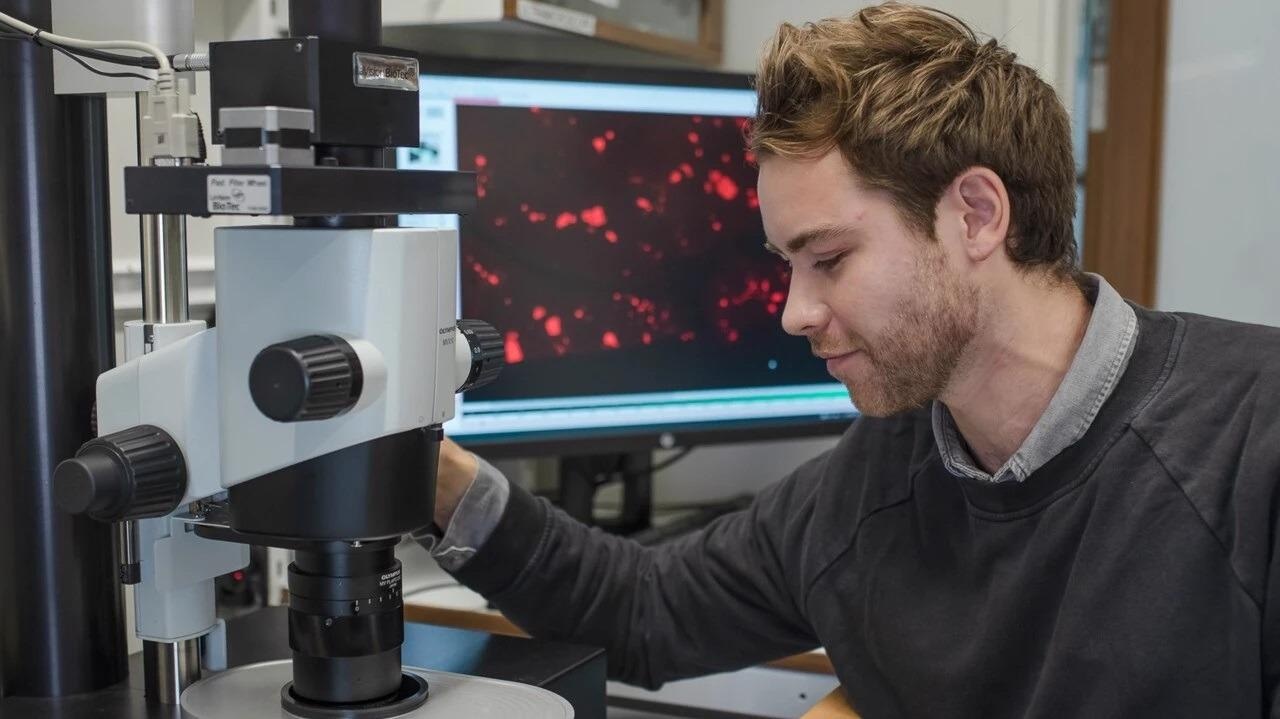A team of scientists at Umeå University has recently proven a technique by which particular cell types in human organs can be examined with micrometer precision.
 Max Hahn, doctoral student at Umeå Center for Molecular Biology, studies a tissue sample with a light sheet fluorescence microscope. Image Credit: Mattias Petterson.
Max Hahn, doctoral student at Umeå Center for Molecular Biology, studies a tissue sample with a light sheet fluorescence microscope. Image Credit: Mattias Petterson.
The technique not just reveals formerly unidentified changes in the pancreas but can also be used to examine other human organs and diseases.
This method may contribute to an advanced understanding of how cellular changes are related to different disease conditions.
Ulf Ahlgren, Professor of Molecular Medicine, Umeå University
The scientists divided the organs using a 3D-printed matrix, thereby forming portions of tissue with the ideal size for optical imaging with 3D technology. These pieces could then be labeled to image any protein or cell type of choice. As each tissue bit has known coordinates, the individual 3D images can be put together with the help of a computer into a 3D jigsaw puzzle to create a complete human organ.
Smaller than Dust
This technique facilitates high-resolution 3D images of human organs to be created in almost any size with micrometer precision, which is smaller in size than a dust particle.
Earlier, the creation of high-resolution images of biological material was only possible through technologies such as light sheet fluorescence microscopy and optical projection tomography, which have also been used by scientists in this research.
However, the issue has been that earlier approaches have not provided a practical way of labeling the numerous cell types or proteins one wishes to examine, for instance, using fluorescent antibodies while examining specimens on a larger scale, such as a whole organ. The new technique, however, has overcome this problem.
Using this technique, the researchers at Umeå have examined the human pancreas. The pancreas contains hundreds of thousands of insulin-making cells known as the Islets of Langerhans. These islets are crucial for the production of insulin and are, therefore, an important element in diabetes when the production is interrupted.
The new technique helped the team to unravel formerly unidentified features of the human pancreatic pathology and anatomy, including areas with very high islet density. The study results may have a profound impact on anything from preclinical to clinical areas, for example, to enhance islet transplantation procedures for people with diabetes, or creating non-invasive clinical imaging to investigate the pancreas in people with diabetes.
Understand Diseases
Beside using the new method to study diabetes, it can also improve understanding of other pancreatic diseases, not least pancreatic cancers, and we have initiated collaborations with clinical researchers in Umeå to look into that.
Ulf Ahlgren, Professor of Molecular Medicine, Umeå University
“But the technology itself should be possible to use to study other organs and diseases in similar ways since it enables the study of where cellular changes take place in a full organ context, their amount and relationship to nearby tissues and cell types,” added Ahlgren.
The study was carried out in partnership with scientists at Uppsala University and was financially supported by the Swedish Research Council, the Swedish Childhood Diabetes Foundation, Diabetes Wellness Sverige, the NovoNordisk Foundation, the Kempe Foundations, and Umeå University. The research paper was published in the Communications Biology journal.
Journal Reference:
Hahn, M., et al. (2021) 3D imaging of human organs with micrometer resolution – applied to the endocrine pancreas. Communications Biology. doi.org/10.1038/s42003-021-02589-x.